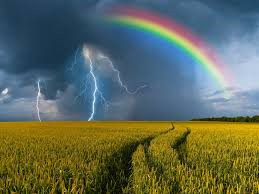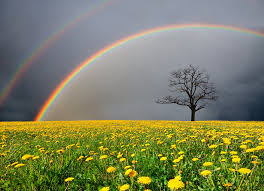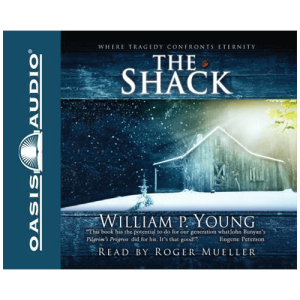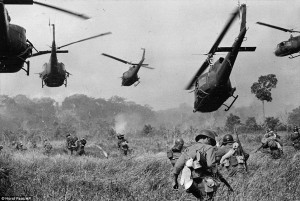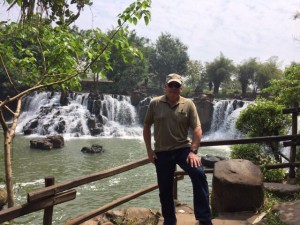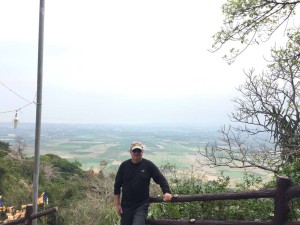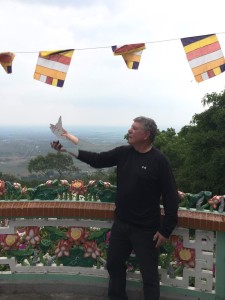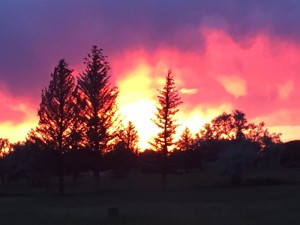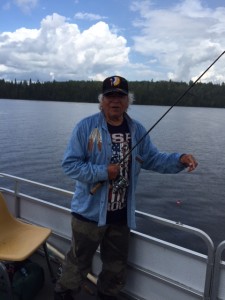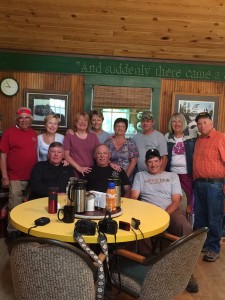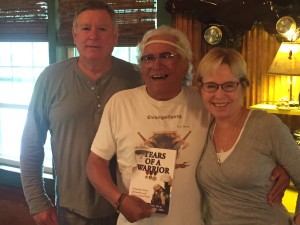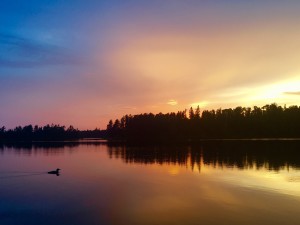Jul
26
THE RAINBOW CONNECTION
Filed Under Blessings, Coronavirus, Courage, COVID-19, Faith, Family, Grateful, Gratitude, Happiness, Healing, Hope, Peace, Tears, Tears of a Warrior, Tears of Joy, Veterans | Comments Off on THE RAINBOW CONNECTION
By Janet J. Seahorn, Ph.D.
How many of you remember the song, Rainbow Connection, by my favorite green frog, Mr. Kermit? In a time of necessary isolation and separation we need to work hard to find ways to connect to each other. Kermit’s song, Rainbow Connection, got me thinking about my own Rainbow Connection. Covid19 has attacked almost every part of our daily existence… our relationships, our jobs, our food sources, our medical care, schools – and the list seems endless. Struggling to maintain any semblance of our pre-covid lives can be exhausting. Grasping to stay attached to our family, friends, coworkers, neighbors can be an emotional combat zone.
During a storm the clouds gather, the skies darken, and often times the winds howl horrifically. Eventually rain falls, sometimes lightly and sometimes with the force of pelting water bullets that turn into huge hailstones. Yet, after the storm – if we are lucky and continue to look beyond the gale an amazing rainbow appears. The fractions of light bounce off each raindrop reflecting astonishing and breathtaking colors as a promise of the possibility for new beginning and fresh new starts.
Our tears can be a bit like these raindrops, but the various colors may only be seen in our own minds and hearts. We experience the colors of grief, of fear, loneliness and anxiety. However, there are also colors of hopefulness, courage, joy, love and clearer skies in the future. What lessons are we learning about each other? Ourselves? Are we able to see ALL of the rainbow or only a small part?
The other day I came across a quote by Haruki Murakami,
“When you come out of the storm you won’t be the same person who walked in. That’s what this storm’s all about.”
In the song, Kermit talks about being a Lover, a Dreamer, and Me… and the voices calling your name. Perhaps these new voices are what you hear after or even during the storm. Are you listening? There is magic in rainbows and we can, if we choose, linger under the glorious and colorful spell of its Vision. If we look for what may be on the other side, perhaps we can keep that Lover, that Dreamer in us and connect it to others. Perhaps we are that Rainbow Connection and we are a bit better after the storm than before we went into it.
Mar
26
GETTING UNSTUCK
Filed Under Black Lions, Combat PTSD, Courage, Events, Faith, Family, Healing, Hope, Journey, Love, Pain, Peace, PTSD, Return To Vietnam, Tears of a Warrior, Veterans, Vietnam Today, War | Comments Off on GETTING UNSTUCK
by Janet J. Seahorn, Ph.D
It isn’t easy to move forward in life when you seem trapped by events that happened in the past. Often times the harder you try to get unstuck, the more bound you become to that very past. So how does one resolve such a dilemma? It probably won’t be without effort, time, and even some painful moments.
In the book/movie, The Shack, the lead character is tormented by an unimaginable personal tragedy. No matter how hard he tries to move forward beyond his pain and horrendous memories, he can’t. Being caught in a terrible incident he is unable to see past his pain to the extent that very little joy or happiness can enter his life. In order to heal he is forced to go back to the place (the shack) where he got stuck; the place where the horror, the anguish, and the future was taken from him.
I think this is what Tony was doing when he decided to return to Vietnam. In order to heal more completely he made a choice to go back to the place where he became stuck, a space that over the last many decades unconsciously became his “shack”. Since his military service in Vietnam he has worked incredibly hard to move beyond the memories and the demons, but there were still times when the burden of combat obscured his vision and ability to live fully. As part of the healing process he had to exhume the old earth in order to plant and allow for new growth to occur. He will be explaining more in his future blogs.
Toward the end of the movie there was a beautiful metaphor about life. A truism that most of us already know…. life is not neat or precisely organized. It is messy, bumpy, and often unbalanced. Yet, it is this very assortment of messiness and disorder that make us who we are and who we can become if we are brave enough to return to our “shack” to become unstuck.
So what is your “shack”? What might you do to become “unstuck: (that doesn’t mean you have to physically return to a specific location to heal). Just know that this “becoming unstuck” will most likely not be easy, orderly, or without some deep potholes. It is a journey, like Tony, you may need to take alone. However, the reality is that you will not be totally on your own. Like Tony you will have the thoughts, prayers, and support of family and friends that will accompany you in spirit and hope.
Oct
10
Healing with Awe
Filed Under Combat PTSD, Faith, Healing, Journey, Nature, Peace, PTSD treatment, Tears, Tears of a Warrior, Treating PTSD, Veterans | Comments Off on Healing with Awe
by Tony Seahorn
We often talk and write about spending time in nature as an important element of the healing process.
For those with Post Traumatic Stress (PTSD or more accurately PTS), finding solace in natural places helps us realize and appreciate the marvelous wonders of the world.
Following is a link to an article that appeared this weekend in Parade Magazine worth reading.
Living in awe…
Aug
25
VINCE THE PRINCE
Filed Under Courage, Faith, Fishing Therapy, Healing, Healing Waters, Journey, Life, Love, Military, Peace, PTSD, Rushing Wind, Tears of a Warrior, Wounded Warriors | Comments Off on VINCE THE PRINCE
By Janet J. Seahorn, Ph.D.
Once upon a time there was a very young boy who lived an incredibly difficult childhood. He was the oldest son of a family of five children – two younger sisters, one brother and a step brother. At eleven years old he became homeless, kicked out of his family by an abusive father. Drinking and beatings by his dad were endured on a regular basis. For five years he lived on the streets until he was old enough to join the army (1956-1965). Being of Navaho Indian decent, Vince the Prince was a fledgling warrior, and warriors always fight with perseverance and courage.
However, the trauma of his early childhood experiences followed him into the military. He was always in trouble, and believed he would get shot, knifed, or killed in prison. Life was pretty hopeless. Anger often consumed him, a normal coping mechanism many children of abuse use to mask their pain and unpredictable daily circumstances. But, Vince the Prince was a survivor, often called a “smart ass”. Being tough kept him alive, and being enraged kept him “feeling”.
How does a person ever survive such a life? According to Vince the Prince in 1970 he found faith in the spirit of the Lord, and this discovery saved him. Talking with him was pretty amazing as he could quote scriptures from the Bible better than most clergy. His personal commitment to the Lord handed him the hope that he lacked in his younger years and offered him a purpose in how he would live the rest of his life. In 1973 Vince was ordained as a street Evangelist. His parishioners were those confined to the jails and prisons in Chicago. He worked with the street people offering kindness, optimism, and faith. Having this new mission made him think of others before himself. He was no longer in the survivor mode, but in a vocation of serving those who, like him in his early years, were crushed by life experiences far beyond the control of a young boy. In 1983 he even completed his GED after having only a fifth grade education. Yep, pretty darn remarkable.
I asked him at the end of one of our conversations “What has been your greatest lesson?” His response, “No matter who or what you are, in God’s eyes you are precious.” And, ‘When all else fails turn to Jesus.”
Vince the Prince continues to work with young teens, many who are homeless like he was in his early years. Who better to understand their struggles, their fears, and their despair? Who better to provide a sense that no matter how dire your circumstances may seem there is always hope and that hope can lead to a miraculous future. Living life with purpose and a wicked sense of humor make Vince the Prince a very special human, indeed.
(I recently spent a week with Vince at a remote fishing camp in Canada called Rushing Wind. Tony and I were invited to work with veterans who have experienced the effects of combat and are finding ways to heal from the wounds of war.)
Listen peacefully to the wild call of the Loon.


